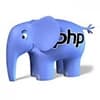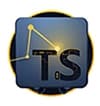Hi my name is
Spas Cholakov
web developer.
Software Developer (Full Stack) / Data Scientist
React / NextJS / NodeJS / TypeScript / Golang / Python / PHP
LangChain Seminar – Hosted by Spas Cholakov & Soft University ➢



















Whether you're a developer, data scientist, or AI enthusiast, this session gives you the practical foundation to start building smart, dynamic AI solutions.
Discover how to build powerful AI applications using LangChain — a framework designed to connect Large Language Models (LLMs) like GPT-4 with memory, tools, and external data.
In this seminar, we explore:
How LangChain simplifies AI app development
Real-world use cases with agents, prompts, and vector databases
Integrating tools like Qdrant, OpenAI, and Retrieval-Augmented Generation (RAG)
Best practices in production-ready LLM systems
Sentence Transformers Explained: SBERT, MiniLM, RoBERTa + Benchmarking & Model Comparison!
Sentence Transformers — a powerful family of models, designed for text embeddings!
This model family creates sentence-level embeddings, preserving the full meaning of a sentence, rather than just individual words.
Built on top of BERT, SBERT, and other transformer architectures, it excels in tasks like text similarity, clustering, and retrieval.
Build an AI-Powered App with FastAPI, Qdrant, NumPy, and Pydantic | Step-by-Step Tutorial #9
FastAPI with Custom Decorators & Embeddings In this tutorial, we take FastAPI development to the next level by implementing custom decorators with error logging and enhancing vector generation with SentenceTransformers.
🔹 Key Topics Covered:
✅ Creating custom decorators for structured logging
✅ Handling exceptions globally with decorators
✅ Implementing automatic error handling across classes
✅ Refactoring project structure for better maintainability
✅ Integrating MPNet embeddings to generate semantic vectors
PyTorch DataLoader for Recommendation System: Loading and Preparing User-Item Data | Tutorial #1
In this first video of the series, we tackle one of the most crucial steps in building a recommendation system: data loading and preparation. Using PyTorch, you’ll learn how to handle user-item interaction data, split datasets for training and validation, and efficiently batch data for your models.
What you'll learn:
✔️ Custom PyTorch Dataset class creation
✔️ Efficient data loading and batching with DataLoader
✔️ Dataset splitting for training and validation
✔️ Data preprocessing for recommendation systems